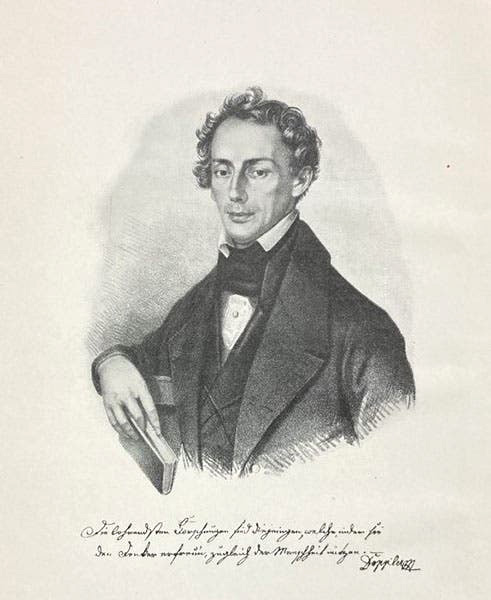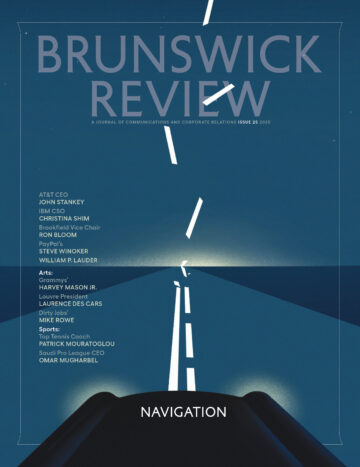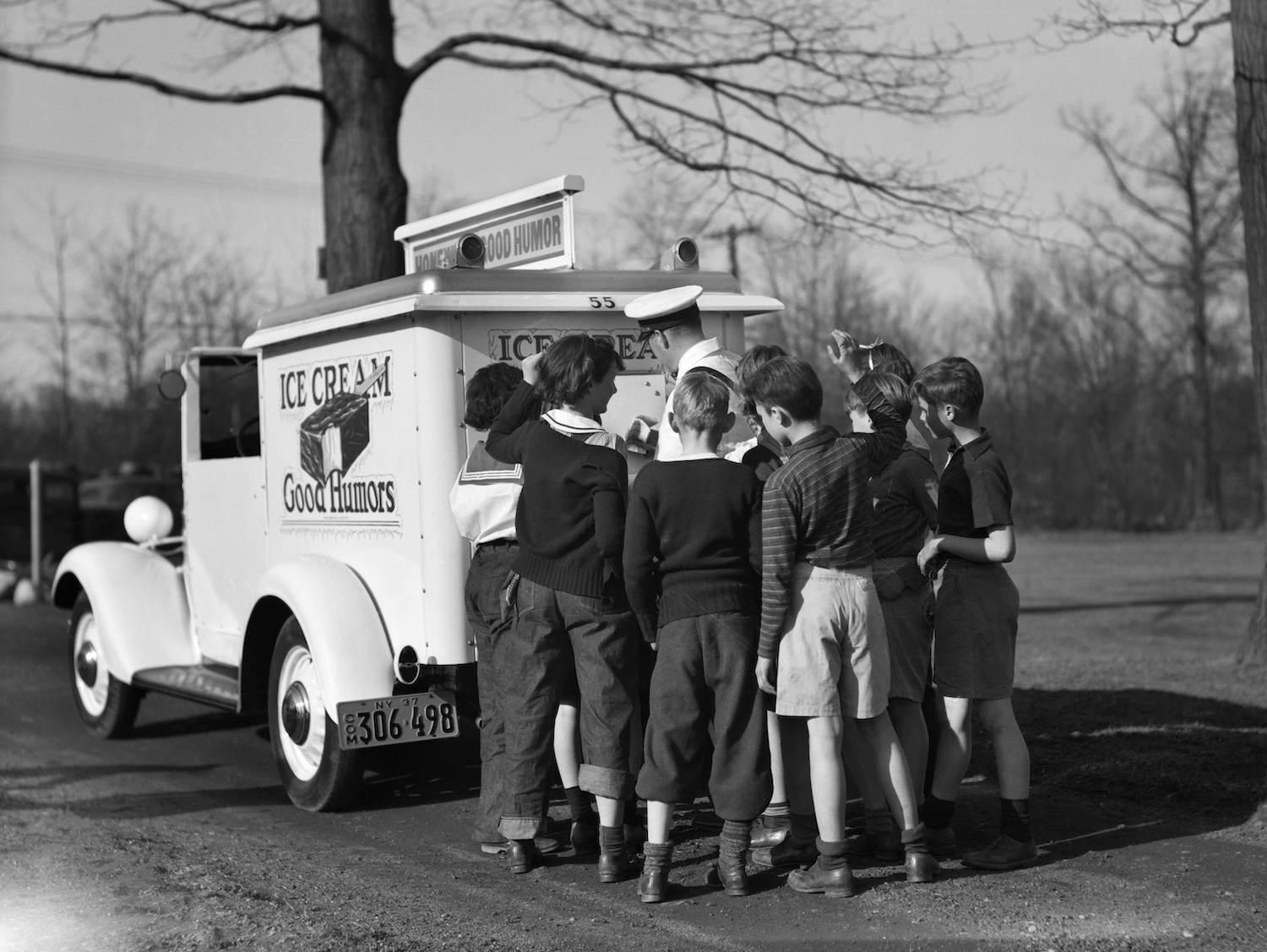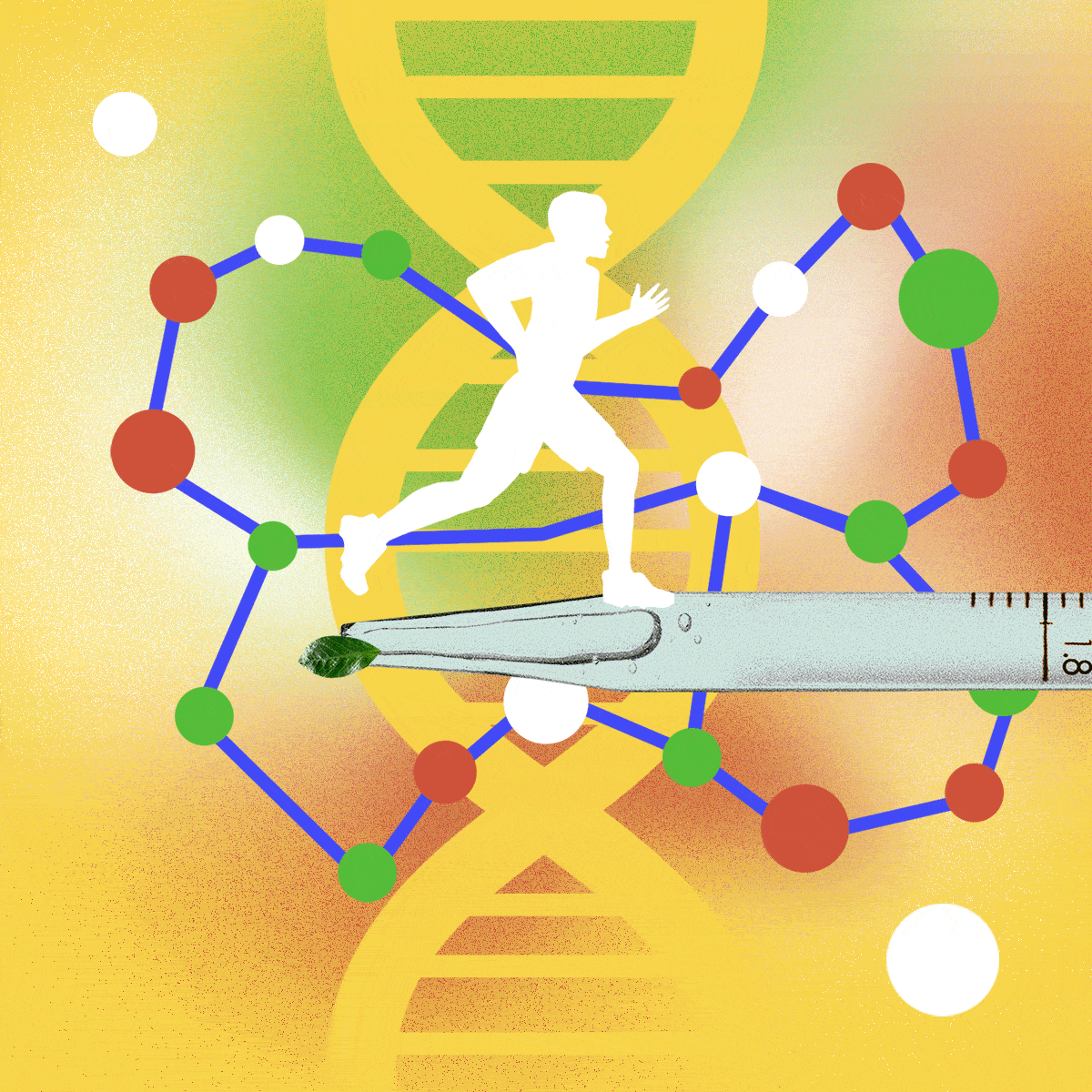A Good Humor driver hands out ice cream bars to waiting children in the 1940s. As they pass through neighborhoods, the trucks’ songs are a call to customers, and also a demonstration of the Doppler effect.
There’s something magical about the song of an ice cream truck. Whether or not adults enjoy it, seemingly all the children within earshot are captivated. But listen, and you’ll notice something else about the sound: The pitch changes as it passes by. The whole tune flattens.
In fact, any noise-making object will do the same—a car radio or engine, a siren, an airplane, a train whistle. The sound is higher as it approaches and lower as it moves away, an effect so common as to be unremarkable. Yet, like the ice cream truck itself, that change in sound carries a gleam of wonder for us, and it has captivated generations of innovators who have used it to revolutionize aspects of modern life, including navigation.
The brilliant Austrian physicist Christian Andreas Doppler first described this effect in a May 23,1842 paper, noting that the color of starlight was linked to its motion. The shorter lightwaves of approaching stars are a different hue from the longer ones of those receding. Edwin Hubble in the 1920s applied this “Doppler-shift” to distant galaxies and arrived at a bold conclusion: The universe was expanding. His findings formed the basis for the “Big Bang” theory.

Because sound also travels in waves, Doppler’s equations for stars work as well for the ice cream truck. The Doppler effect has found wide use in meteorology, traffic radar and medical imaging. But its greatest impact may well be to navigation.
In 1957, the USSR launched humanity’s first spacecraft, Sputnik. American scientists, desperate to track this latest Cold War gambit, noticed that, because of the Doppler effect, the probe’s radio signal changed noticeably as it traveled, offering important clues about its location, speed and flight path.
US defense scientists immediately realized they could use Doppler’s equations to do the reverse. By 1960, they had launched a satellite to identify positions on the ground for ships, submarines and land operations. Advancements followed, eventually resulting in the ubiquitous GPS devices found today in cellphones, cars and vehicles of all types, all informed by a constellation of dozens of satellites—and the Doppler effect.
Like the effect itself, the technology that has evolved out of Doppler’s discovery has become so common that we barely notice it. Meanwhile, the ice cream truck is still the star on our street.
More from this issue

Navigation
Most read from this issue

Community Creator





